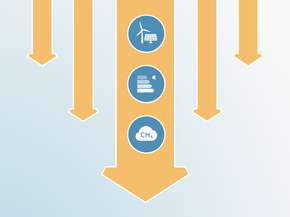Country summary
Overview
With currently implemented policies, India is expected to overachieve its climate action targets submitted under the Paris Agreement. India’s plans include both a non-fossil capacity target for the power sector and an overall emissions intensity target for the whole economy by 2030. However, if India also were to fully implement its Draft Electricity Plan (shown as planned policy pathway in the CAT assessment), it could achieve its target of 40% non-fossil-based power capacity by 2030 as early as 2020—a full ten years earlier.
It is therefore clear that India could strengthen—and still achieve—the Nationally Determined Contribution (NDC) it has submitted under the Paris Agreement. If it did this, the CAT could upgrade its “2°C compatible” rating for India to “1.5°C Paris Agreement compatible,” which would make India a global climate leader. This would also require abolishing current plans to expand fossil fuel production and build new coal-fired power plants.
The extent to which these fossil-fuel expansion plans will be realised, however, is uncertain as they appear to be in contrast with other policies. For example, India is already set to take a global leadership position in the transport sector, following the government’s announcement that no diesel or petrol-powered vehicle should be sold in India by 2030. Similarly, the Draft National Energy Policy projects that more than 60% of power capacity will be based on renewables by 2040.
The ramp-up of renewables in India can provide access to affordable power at scale, and quickly. A report by the national coal mining company confirms declining future costs of solar and renewable electricity storage (Coal India, 2018) which is likely to foster low-carbon investments. The Draft Electricity Plan confirms that no new coal capacity is needed after 2022. Therefore, India’s current coal plant construction programme seems to be unnecessary as it could increase the risk of stranded assets.
Our analysis shows that India can achieve its NDC target with currently implemented policies. We project the share of non-fossil power generation capacity to reach 47% in 2030, corresponding to a 32% share of electricity generation. India’s emissions intensity in 2030 will be 50–51% below 2005 levels. Thus, under current policies, India is likely to achieve both its 40% non-fossil target and its emissions intensity target.
Further analysis
Latest publications
Stay informed
Subscribe to our newsletter




